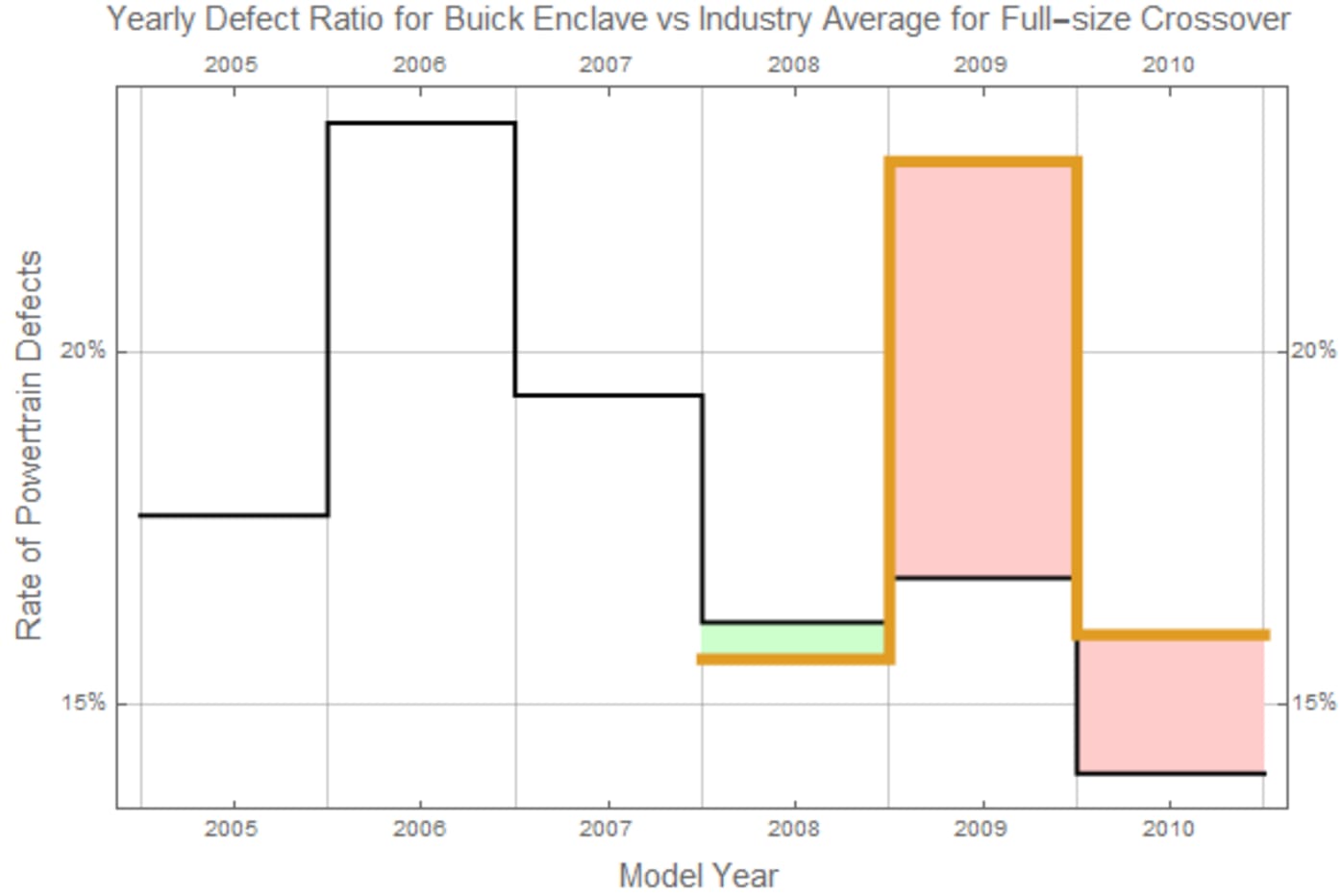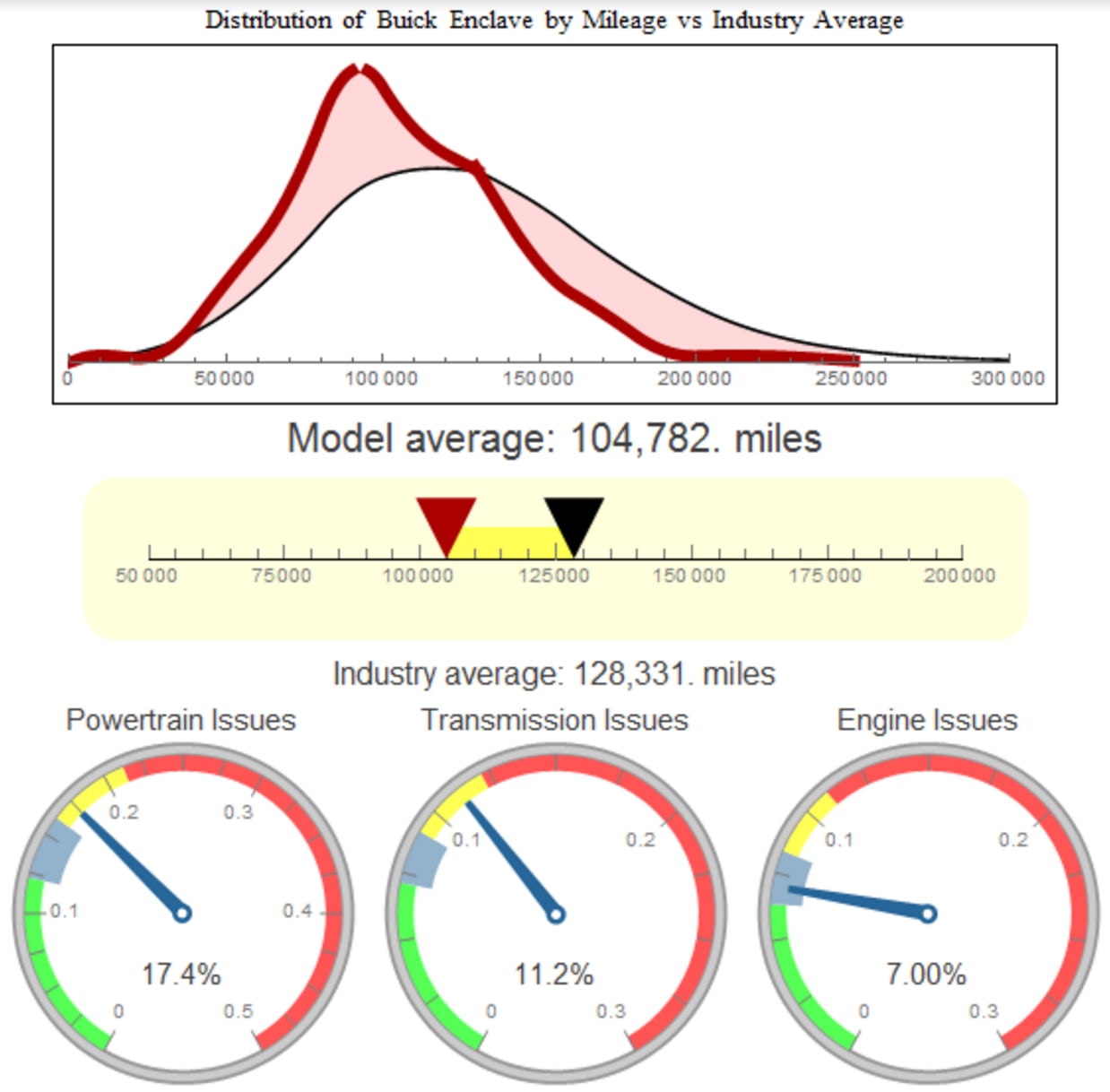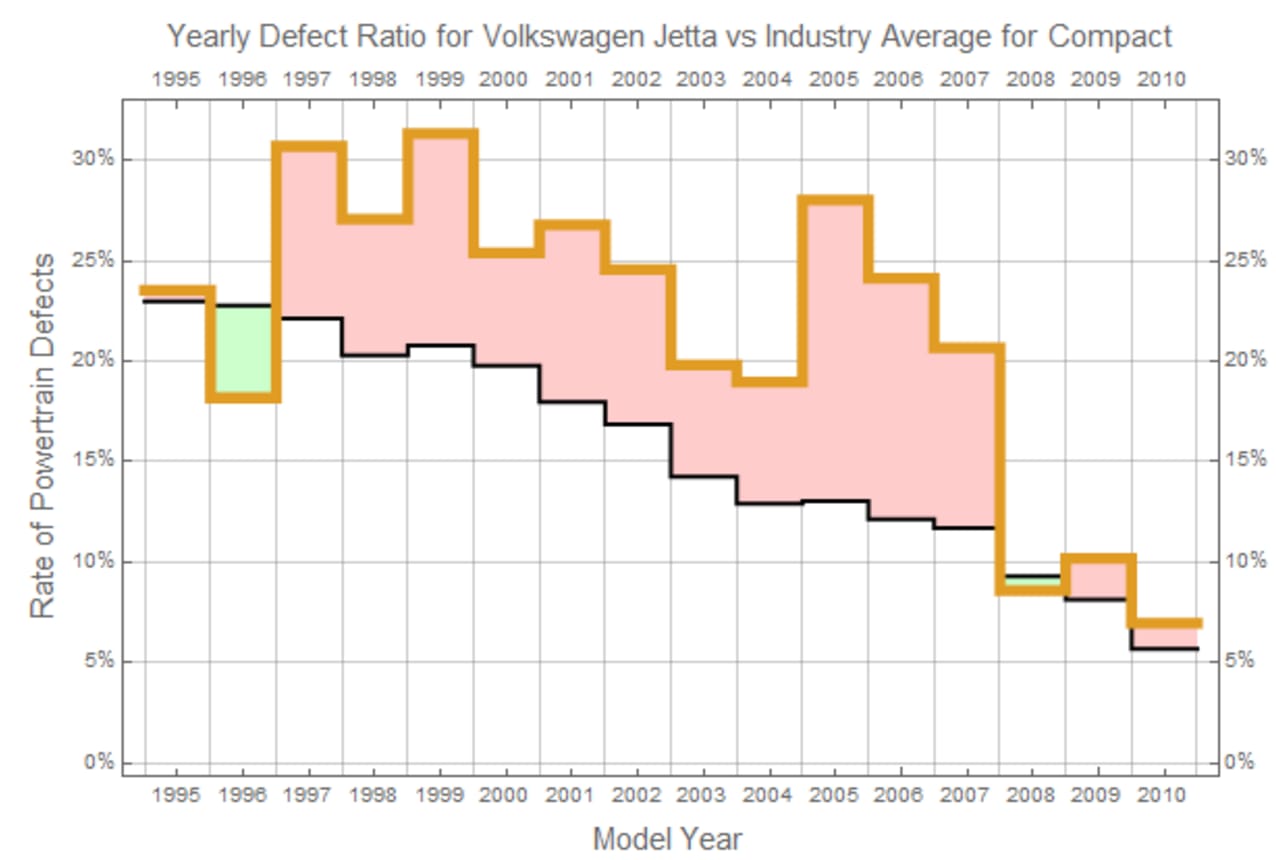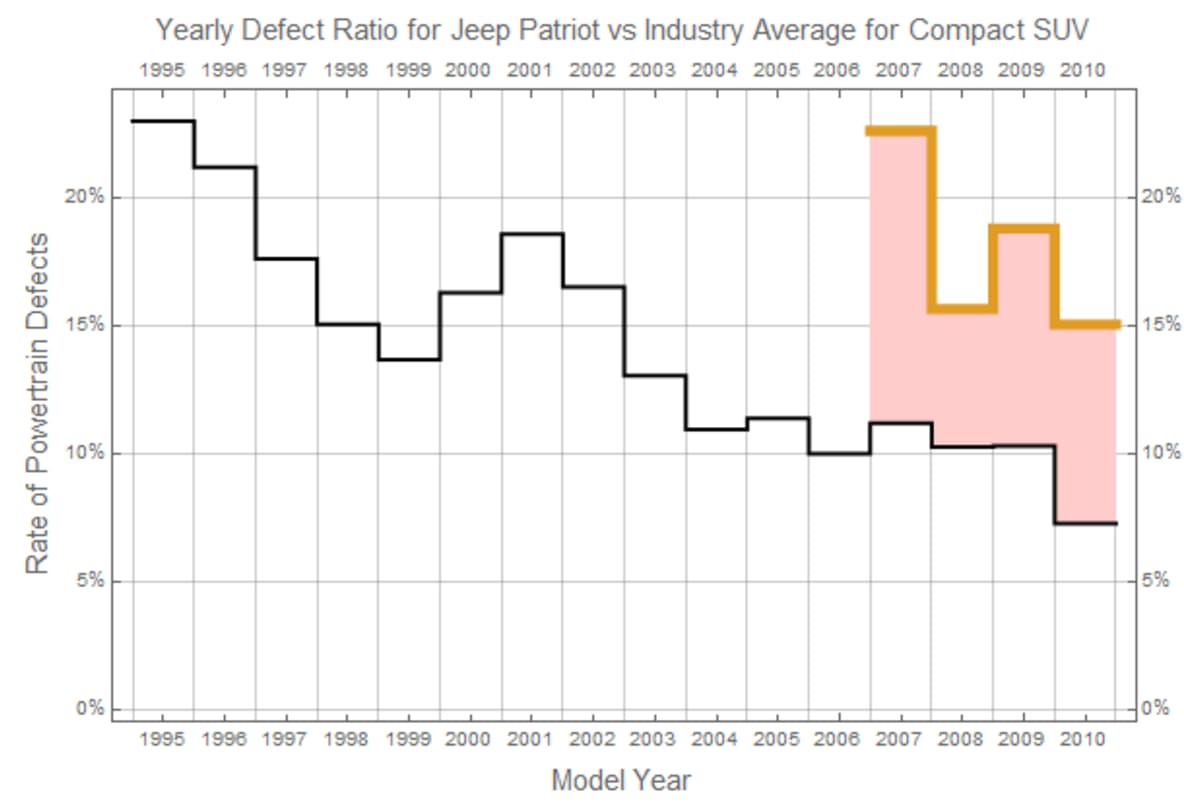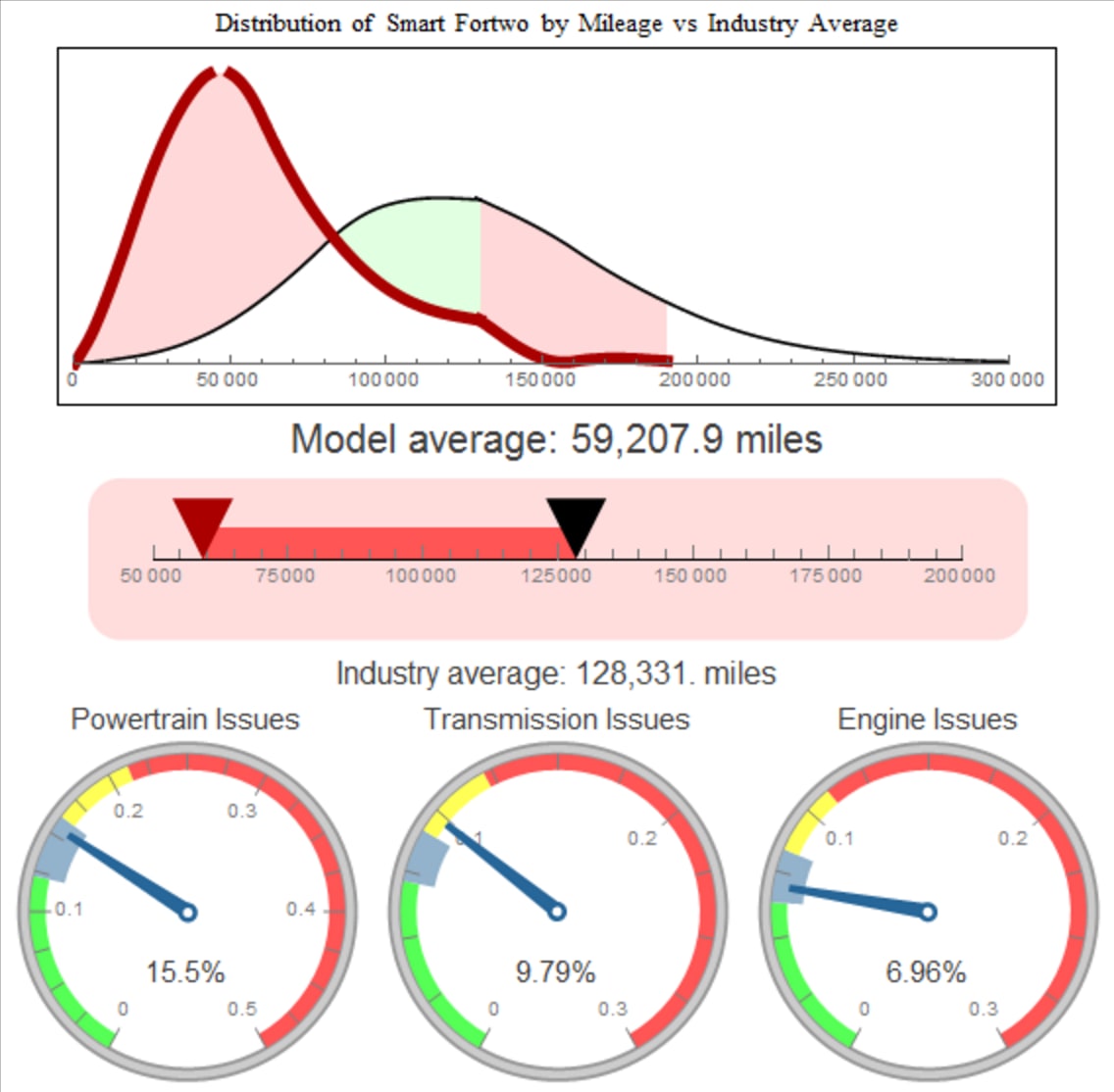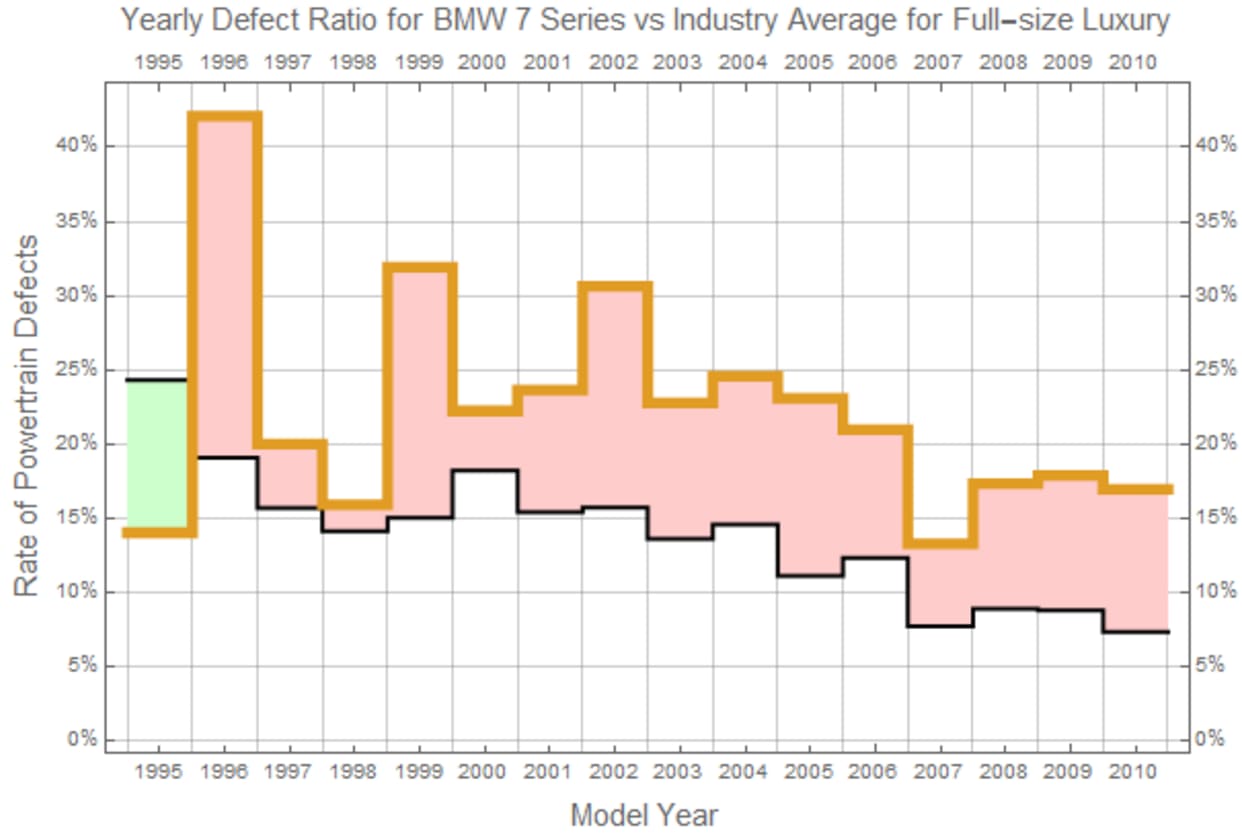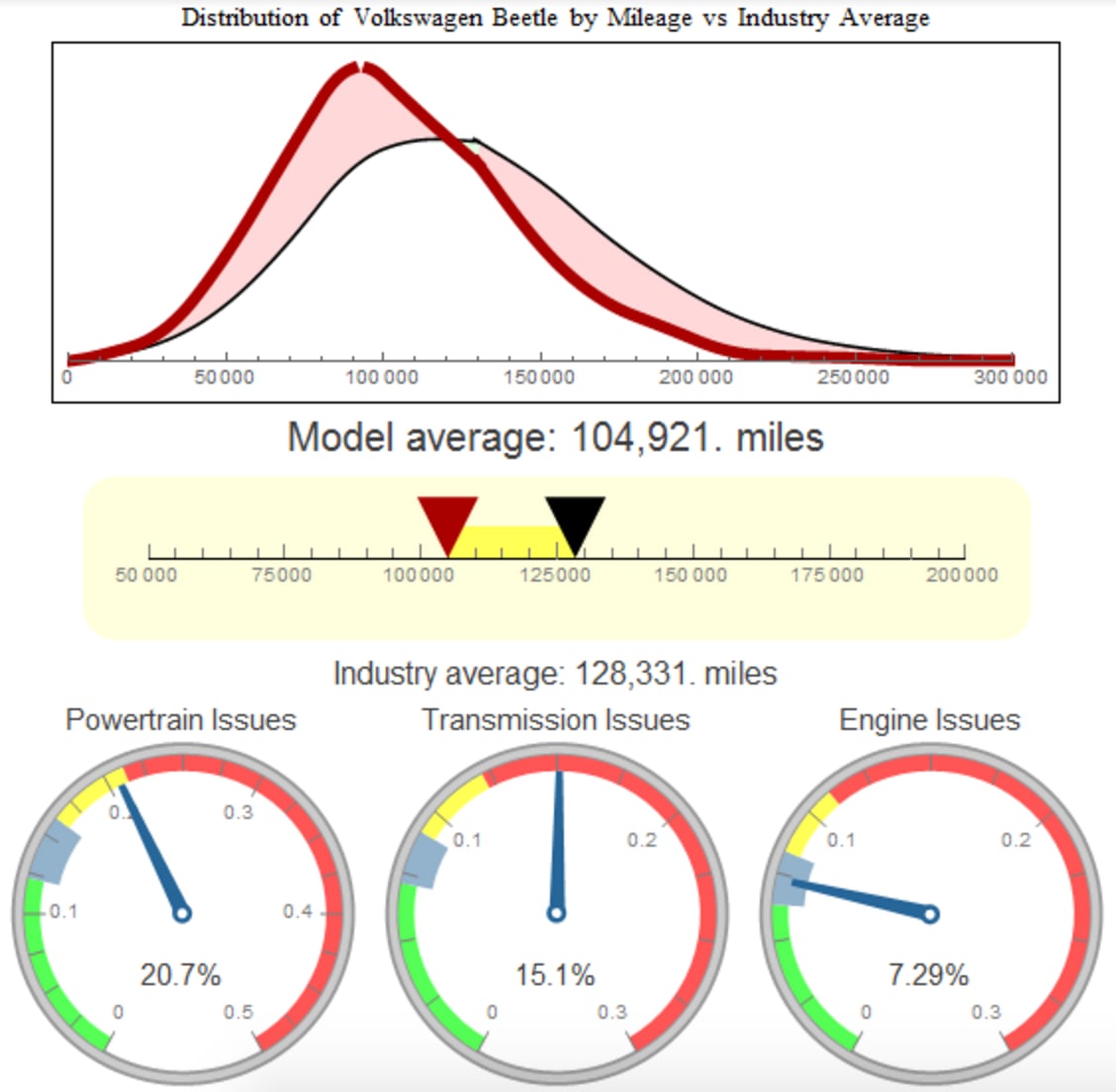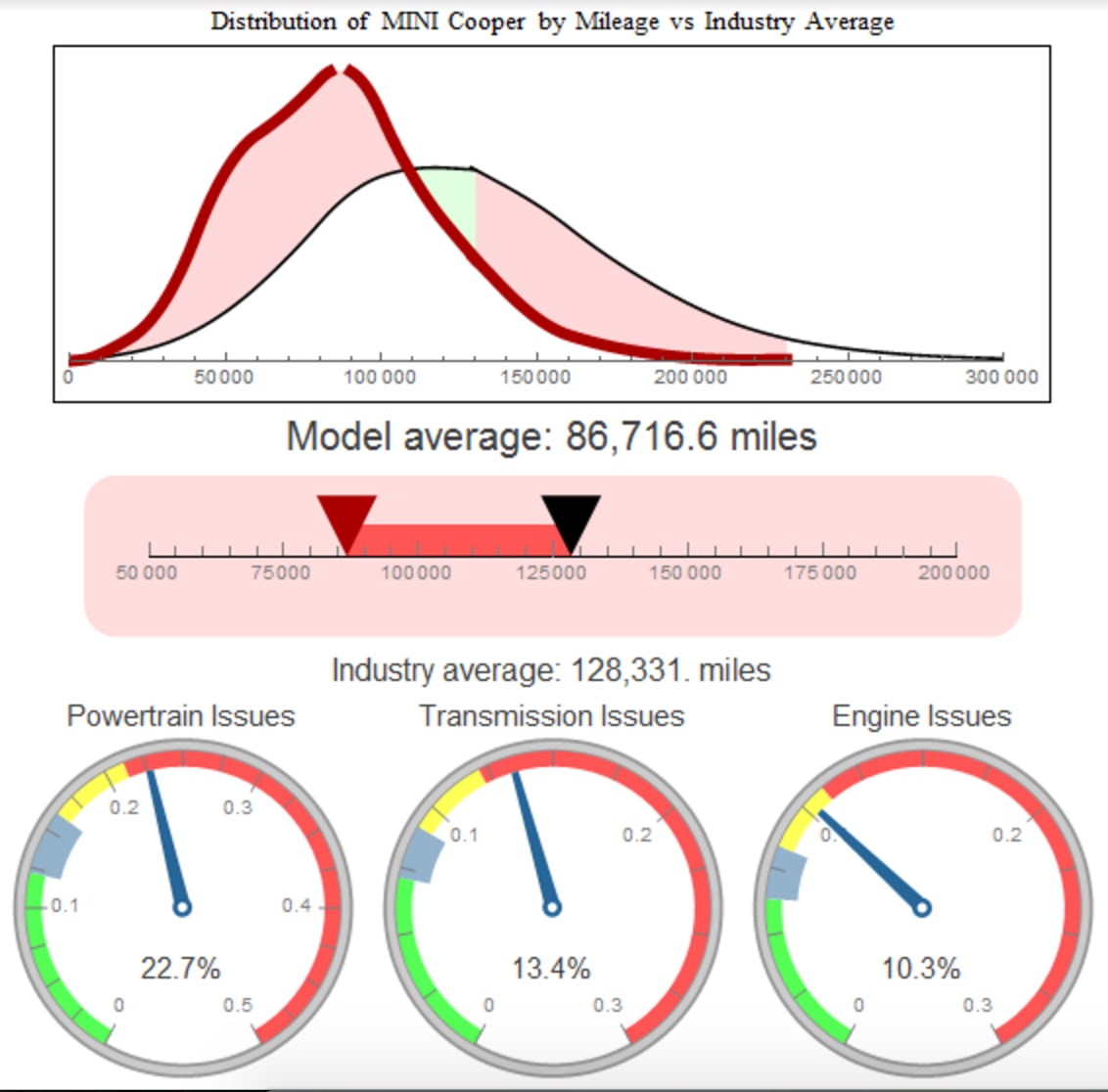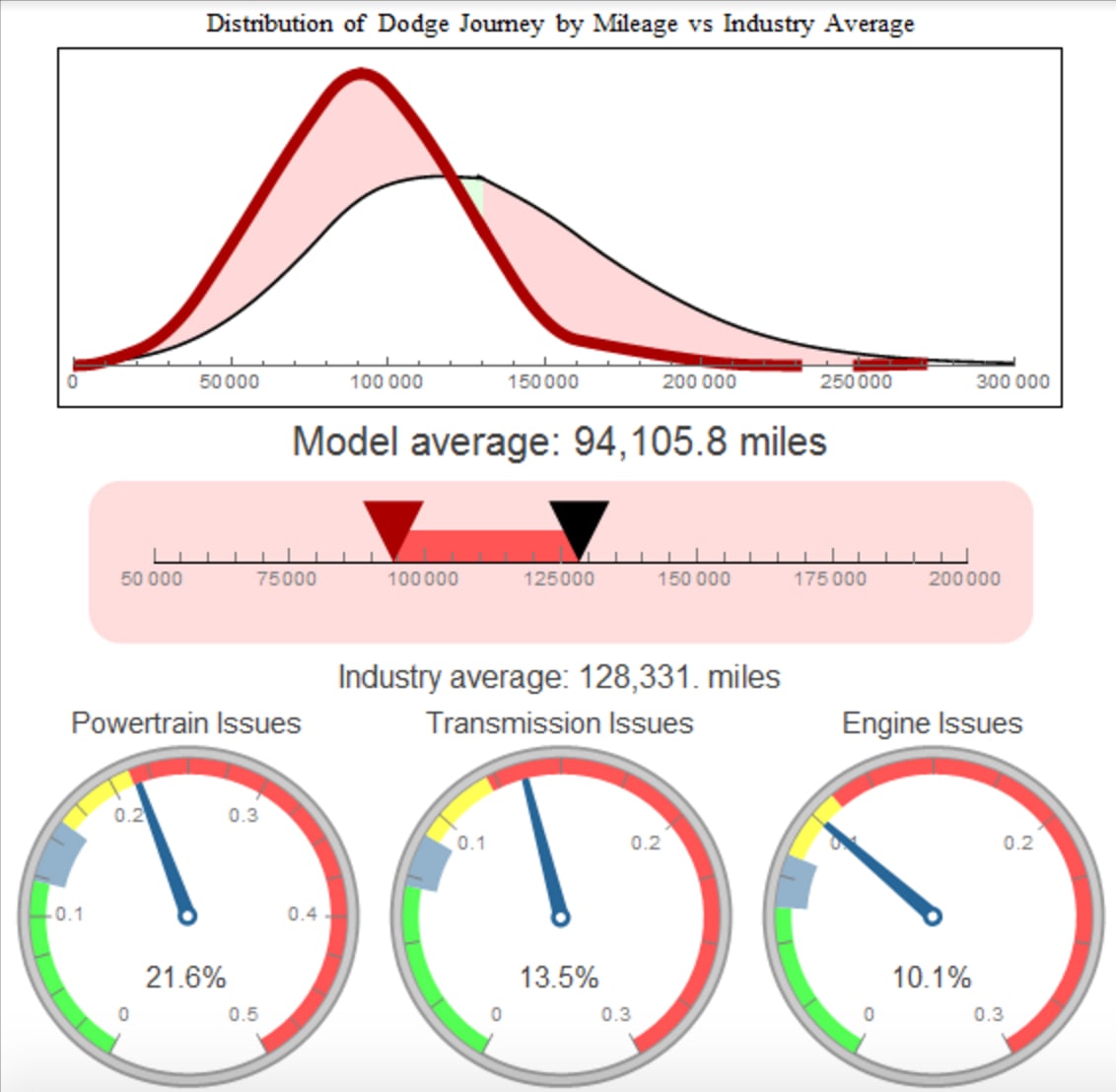

New cars rarely give you a hint about their long-term reliability.
The paint glistens, the interior is pristine, and everything underneath the hood looks almost clean enough to touch without getting your hands the least bit dirty. Nothing in the automotive world is cleaner than a brand new car.
Then the miles start piling on and the reality of car ownership slowly sets into your daily life. 10,000 miles turns into 50,000 miles, and you start to notice the little things: squeaks, rattles, groans. As a car ages, those little things start becoming bigger, more obvious, and more expensive. 50,000 miles turns into 90,000 miles, and pretty soon you're looking at a car that may be driving nowhere nearly as well as it did back when it first rolled off the showroom floor.
You might notice some components that are just a little “off” - the transmission that seems to shift a little bit later than times past; the engine that has some type of weird noise that just doesn't sound right. Automakers spend an incredible amount of time and resources testing out their vehicles before releasing them to the public. However, months of testing can't hold a candle to quality issues that creep up as a vehicle ages over the course of years.
Nothing does a better job of separating cars that are “built to last” over those that were “built too fast” than that slow and harsh reality we call daily driving. So how do you figure out if a model you're shopping for has a greater-than-usual chance of being a lemon? Well, I have spent nearly 17 years as an auto auctioneer and car dealer discovering clear answers to that tough question!
As an auto auctioneer, I would appraise and liquidate thousands of vehicles that were traded in by their owners because of a fatal and expensive defect. Sometimes it was a car with an engine that needed to be rebuilt. Other times it would be a transmission that wouldn't shift properly and would require thousands of dollars to replace. All of the information I gleaned could be a great help to consumers trying to find their next best car - so I decided to work with auto auctions throughout the country in recording this information, and making it easily available to car shoppers who wanted to find a vehicle that would last long after the warranty period had expired.
The results are highlighted on the Long-Term Quality Index, which now has over a million vehicles in its database that have been recorded since January 2013. To make sure the findings were objective and valid, we had independent mechanics inspect and appraise each vehicle for its mechanical condition - instead of owners who may have become used to a hard-shifting transmission or an engine noise that indicates trouble within.
Our results? Well, you can use the Long-Term Quality Index search feature to sift through over 600 models that go all the way back to 1996. Or, if you want the ten least reliable cars sold today, just keep reading!
#10 and #9: GMC Acadia and Buick Enclave
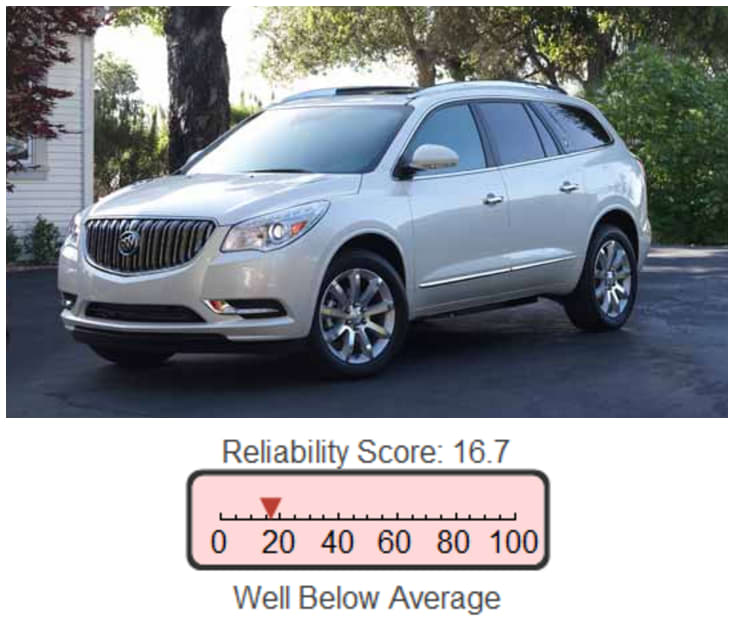
The good news for most car shoppers is that defects tend to be very few and far between during the first five years of ownership. The bad news is that many of today’s most popular cars, trucks, and SUVs can become horribly expensive to repair after that time.
The GMC Acadia and Buick Enclave are rolling examples of that. If you look at the pink portions of the chart underneath, you’ll find that the Buick Enclave had a jaw dropping defect level of 24% in 2009 and roughly 17% in 2010 with its sibling GMC Acadia offering similar levels of abysmal quality.
Why did this happen? In a word: weight. General Motors decided to use an engine and transmission combination (also called a powertrain) that is typically used in midsize cars that weigh approximately 3,300 pounds - much lighter than these two full-size crossovers that often weigh as much as 5,000 pounds.
Not too surprisingly, we have found that the transmissions tend to be far more defective than the engines, but both fare significantly worse than other full-size crossovers.
As a result, the Acadia and Enclave are traded in about 25,000 miles sooner than their average competitor. If you’re looking for a stylish, full-size crossover, make sure to weigh in these potential long-term costs, especially if you plan to keep your vehicle past its warranty period.
#8: Volkswagen Jetta
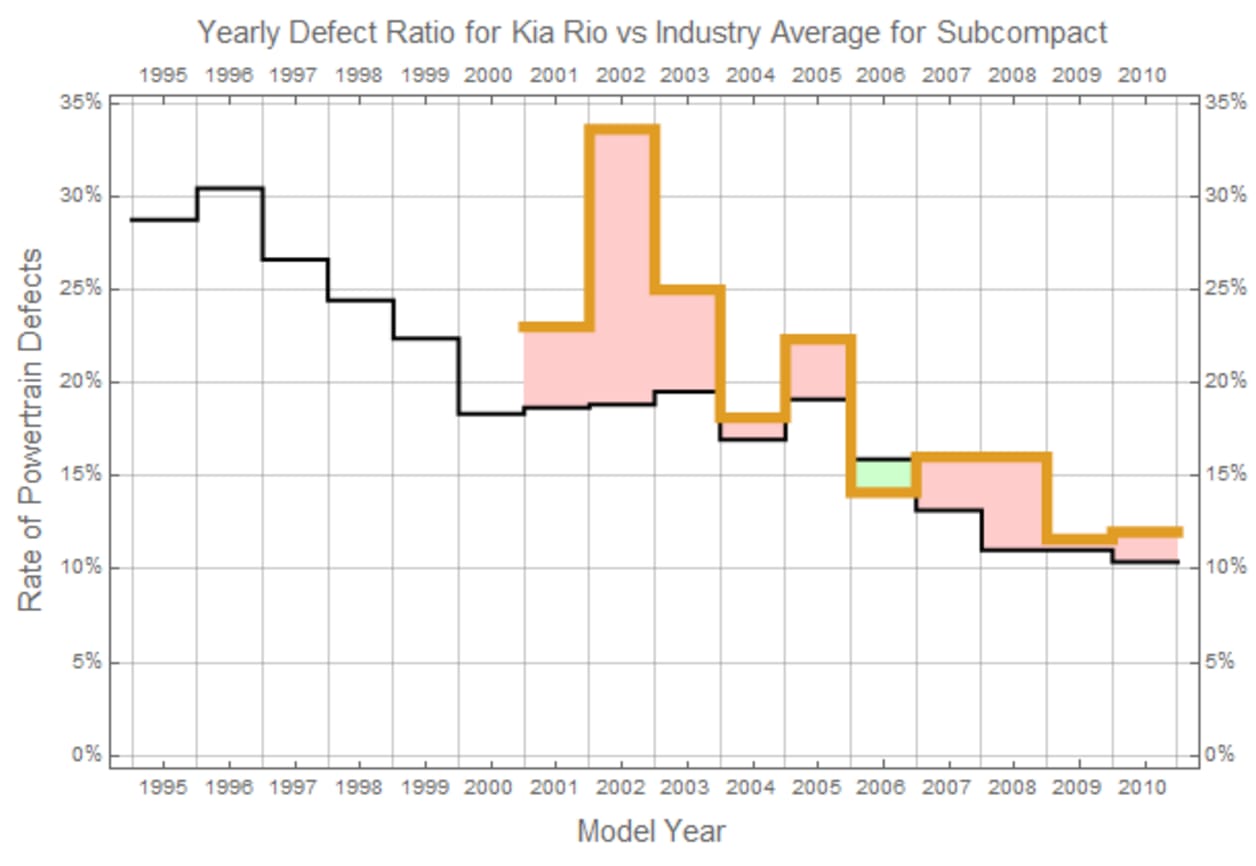
Some cars offer a variety of engines and transmission. In the case of the Volkswagen Jetta, it can make a striking difference between a rock-solid car that will be light on your wallet, and a rolling lemon that can easily bankrupt you.
The best Jettas are easy to find. They have manual transmissions and non-turbocharged four-cylinder engines that either have a 2.0 liter engine, a 2.5 liter engine, or a diesel engine that is not currently under a government recall.
The problem is that millions of Jettas - past and present - feature automatic transmissions, a non-diesel turbocharged engine, or a V6 engine. These less reliable models collectively make up nearly 80% of the Jetta’s total trade-in volume. That sea of pink you see on the above chart from 1996 onwards is actually far higher and deeper when you take away the data from the “good” Jettas.
So if you do want an inexpensive European compact car that’s fun to drive, the good news is you can improve your odds of getting a good one. .But to do that, you’re better off learning how to drive a stickshift - which also happens to be the transmission of choice for most Volkswagen owners outside the United States.
#7: Kia Rio
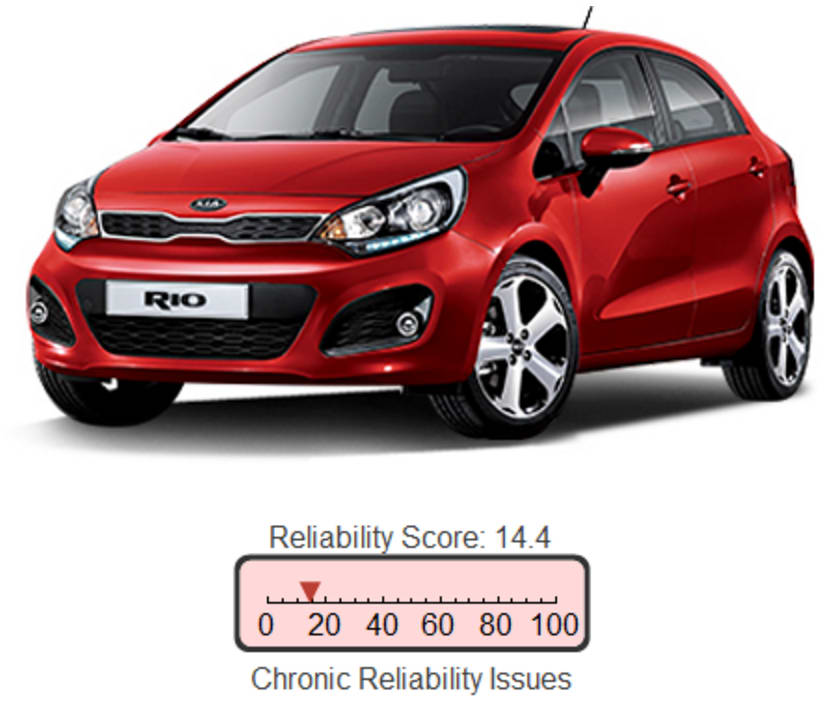
While some lemons can be avoided by opting for certain engine and transmission choices, others are just plain inevitable. The Kia Rio has remained the worst entry-level car when it comes to lemons for nearly 15 years now.
Sometimes a cheap car can cost you a lot more money in the long run. The hard reality for the Kia Rio is that, as it ages, it eventually becomes far less reliable than any other competitor.
What makes matters worse is the greater need to have it serviced. While most automakers have moved on to timing chains or timing belts that can last at least 90,000 miles, the one for the Kia Rio must be changed every 60,000 miles - which was the industry norm well over 20 years ago.
The Rio is a lemon for one other reason: the newest models seem to be espousing the idea of changing the transmission fluid every 100,000 miles which - personally - I find to be a bit optimistic. If you do want to make the Kia Rio a keeper, my advice is to halve that fluid change regimen to 50,000 miles and always get the timing belt changed before it hits 60,000 miles. A replacement engine or transmission is incredibly expensive on these vehicles, given what they offer as daily transportation.
#6: Jeep Patriot
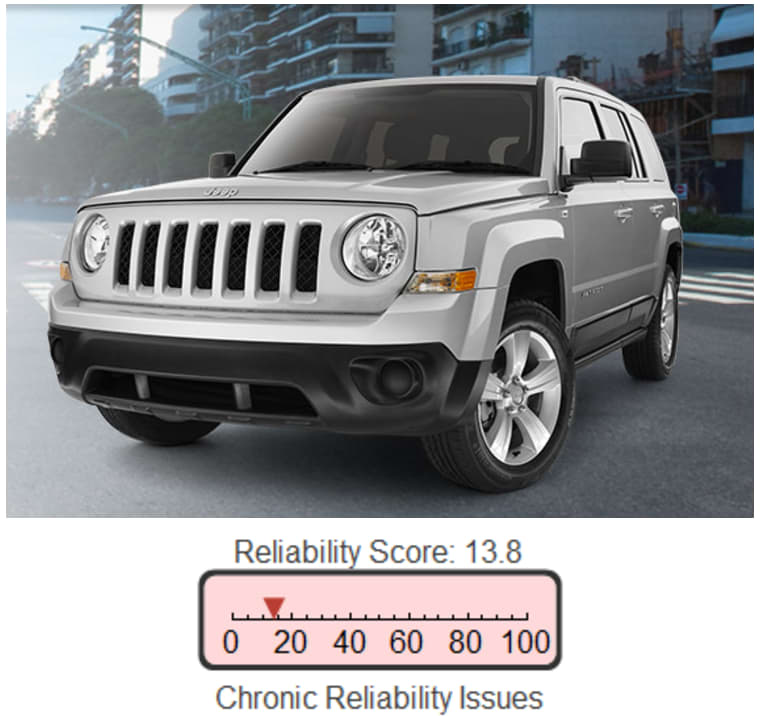
The Jatco CVT, a notoriously problematic transmission, was an option in three of their most popular vehicles: the Dodge Caliber, the Jeep Compass, and the Jeep Patriot which ranks sixth worst on this list.
The Patriot has the dual misfortune of being the heaviest vehicle of the three, while having the largest percentage of vehicles with this transmission. Overall, the Patriot has rated anywhere between 50% and 130% worse than the average compact SUV. This substandard performance leads to expensive repairs - even today, the Jatco CVT can cost well over $2500 to replace.
#5: Smart ForTwo
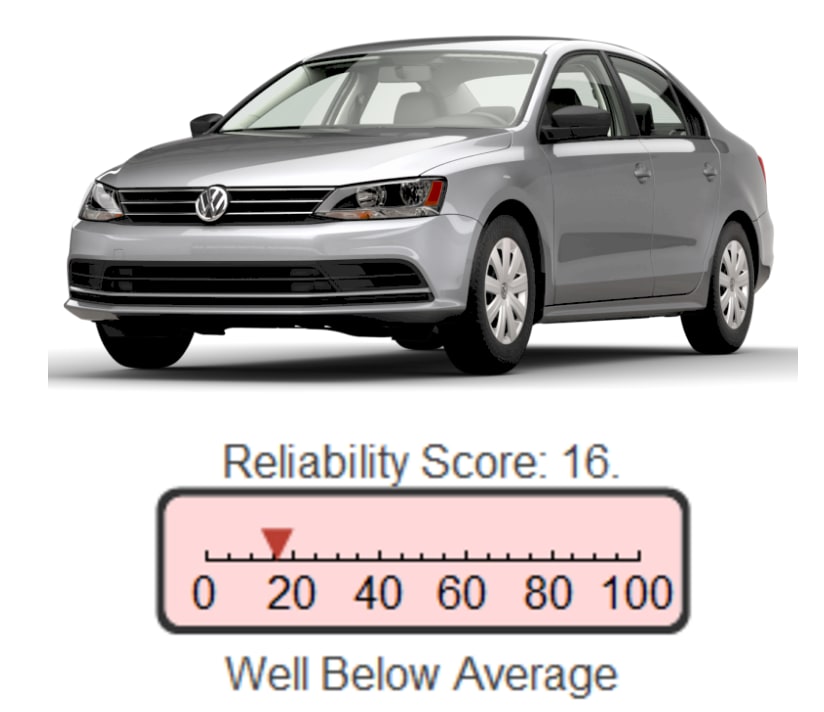
Besides having a very high defect rate, the Smart also suffers from a genuine lack of long-term love from owners. The average model is traded in with only 59,207 miles - the lowest overall trade-in mileage out of any model in our study.
So what’s the main culprit?
The majority of the time, it’s transmission issues that lead to a trade-in. However, with a 15.5% defect rate for cars that usually have less than 60,000 miles, the Smart has the dubious honor of offering the worst of both worlds in terms of reliability and owner satisfaction. It isn’t a good choice for car owners looking to save money either, since it requires premium fuel and a pricey maintenance schedule.
#4: BMW 7-Series
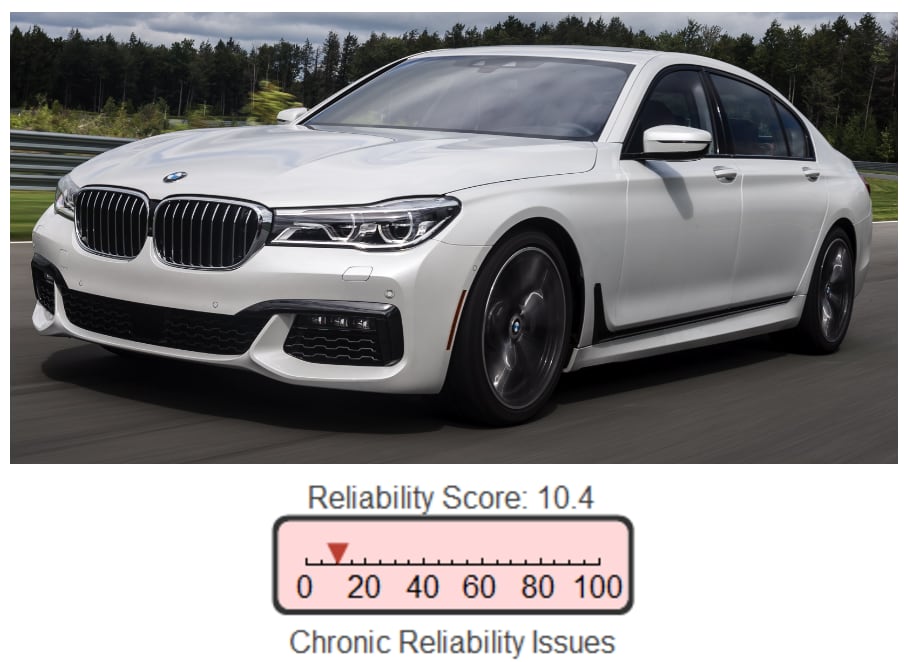
Sometimes a low rating is due to the competition a given model faces in our study. In the case of the BMW 7-Series, it suffers from having to do battle against the most reliable car overall in our study: the Lexus LS.
But even with that disadvantage, there is another reason why you should completely avoid the BMW 7-Series.
No full-sized luxury car has been as uniformly bad as the BMW 7-Series. Since 1996, the reliability of the 7-Series has ranged from poor to downright terrible. It’s not just due to the level of defects alone or the price of repairs which puts the 7-Series far behind its closest European competitor - the Mercedes S-Class.
It’s that, while competitors have steadfastly improved and eliminated many of their more defective components, BMW seems practically impervious towards trying to resolve issues without the federal government getting involved. Not too surprisingly, BMW actually features two of the four most common lemons in our study.
#3: Volkswagen Beetle
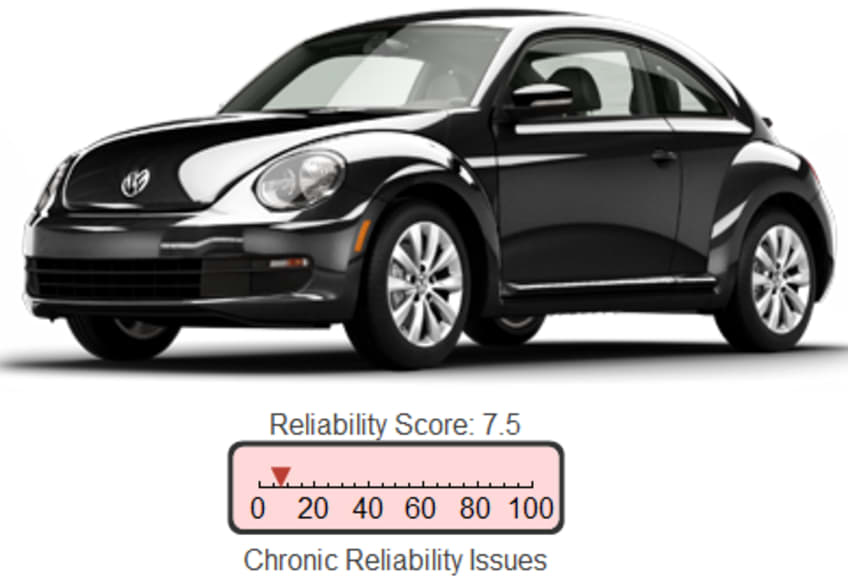
If only the Beetle of today had remained as lovable and durable as the old ones, it probably would have not been in our list at all.
Unfortunately, everything that we mentioned about the Volkswagen Jetta is also true for the modern day Beetle, due to its sharing nearly all the same substandard engines and transmission.
Since the Beetle tends to have more owners who want automatic transmissions than the Jetta, it has a higher defect rate overall. Over 20% of the Beetles traded in have either an engine or transmission issue that requires replacement. That may not seem like a big deal until you take in the fact that the average Beetle is traded in with only 108,000 miles. That’s barely middle-aged in today’s car world, where a quality vehicle can last well past the 200,000 mile mark.
#2: MINI Cooper
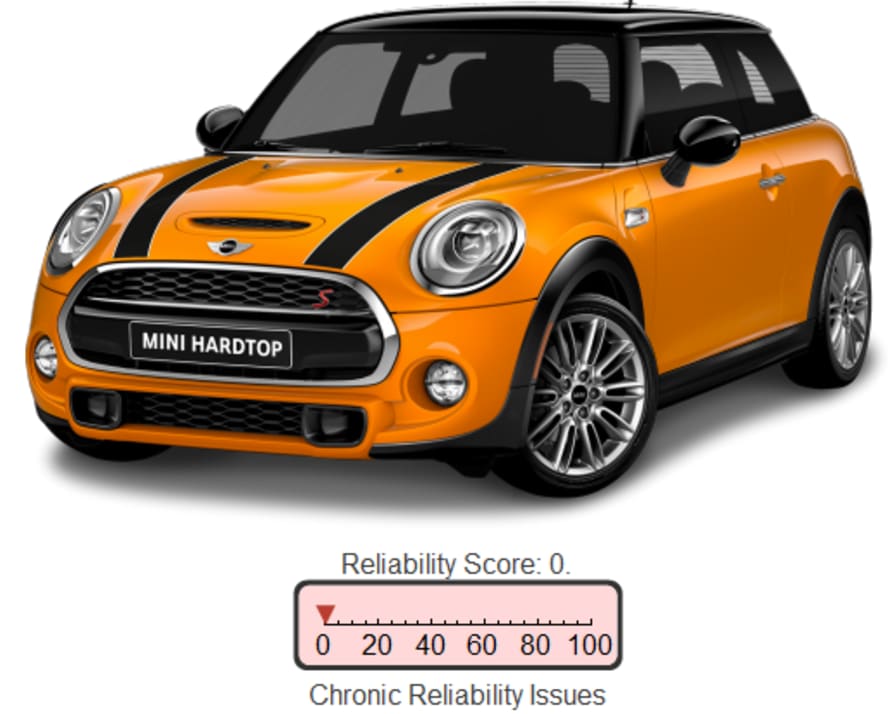
The MINI Cooper has a tendency to polarize opinions of this small car among car owners.
On one side, there is the strong enthusiast base that absolutely loves these models to no end. It boasts great handling, and a fun look: BMW’s design and engineering teams created an iconic vehicle back in 2002 that competitors such as the Mazda Miata and FIAT 500 can’t quite equal. Every year it has been available, the MINI has been America’s most popular sporty small car.
The bad news is their reliability.
Beyond the temperamental engines that have high compression ratios, and therefore require premium fuel (which owners don’t always use), the MINI also has chronic problems with both the manual and automatic transmission options. Overall, nearly a quarter of MINIs that are traded in have either an engine or transmission defect that will require a pricey repair bill.
The MINI’s reliability isn’t ranked 0 overall - it’s only a woeful 0.028538. Which vehicle is worse?
#1: Dodge Journey
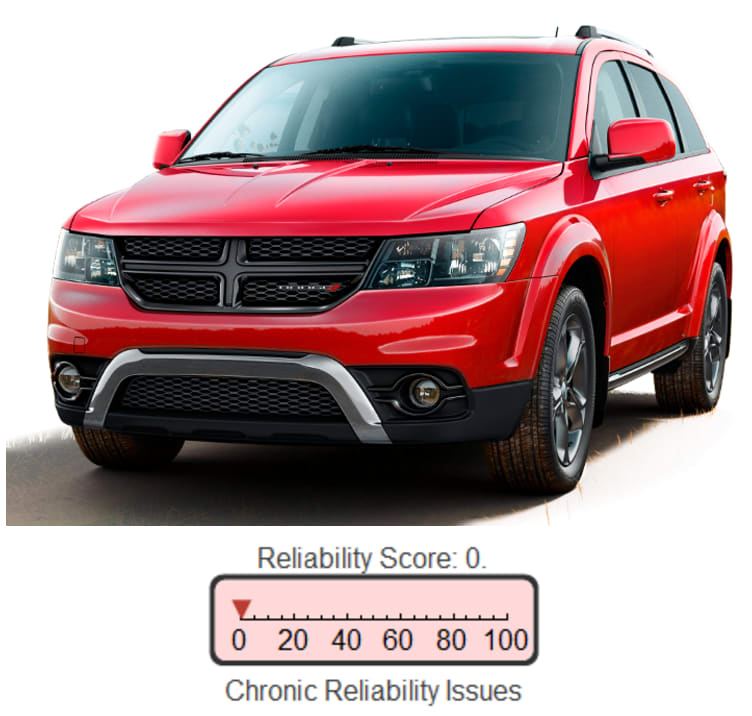
The Dodge Journey is the bottom of the list, thanks to an anemic four-cylinder engine paired with a four-speed automatic transmission that is Chrysler’s sole remaining transmission from the days when the company was going bankrupt.
While the MINI Cooper has amassed a higher percentage of lemons than the Journey (22.7% vs. 21.6%), it took the MINI seven more model years to become that unreliable.
The Dodge Journey has only been available since 2009 - which means that these vehicles are failing far sooner than the MINI, or any other vehicle in our long-term quality study.
I can’t stress this enough: Do not buy a Dodge Journey with the four-cylinder engine and four-speed automatic transmission option. This powertrain had trouble staying together in the mid-sized Dodge Avenger and Chrysler Sebring - two models well-known for offering terrible quality. With an extra half-ton to haul around, this powertrain is simply too stressed and overmatched to hold up.
Now that you’re armed with the knowledge of the worst cars in our long-term quality study, you can hopefully make a better-informed decision when you’re in the market for a new or used car. To go further in assuring that you get the best quality in a car for your money, don’t forget to have a certified mechanic conduct a pre-purchase inspection before you buy.


